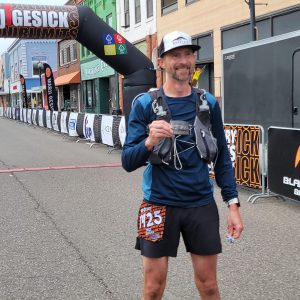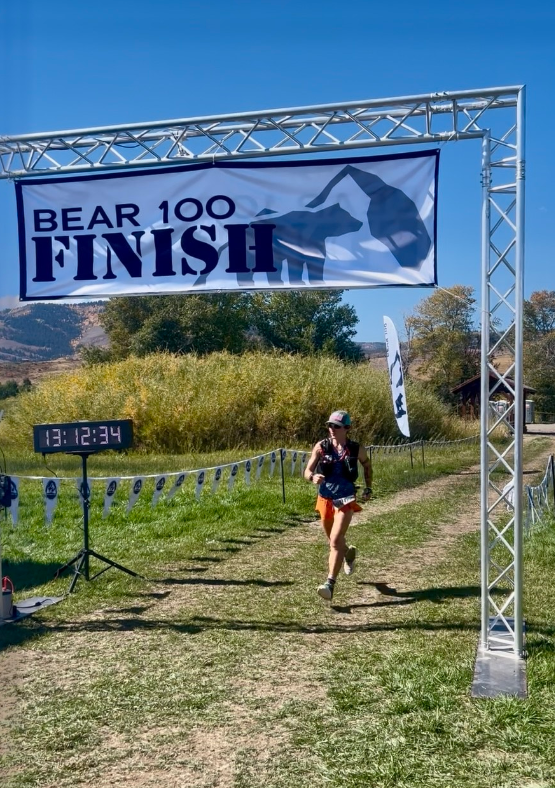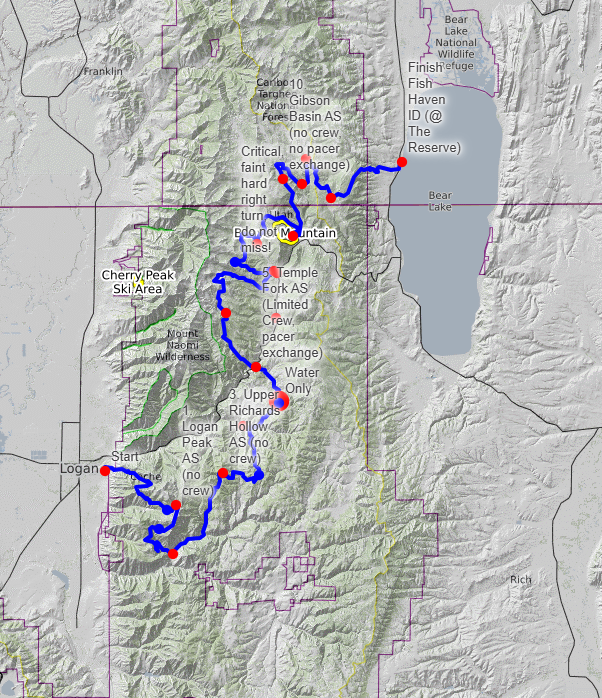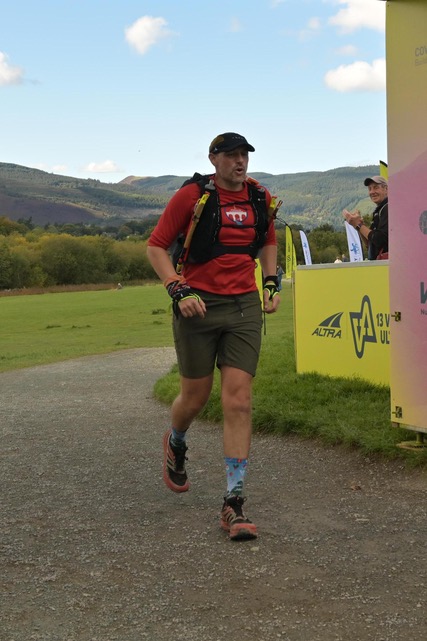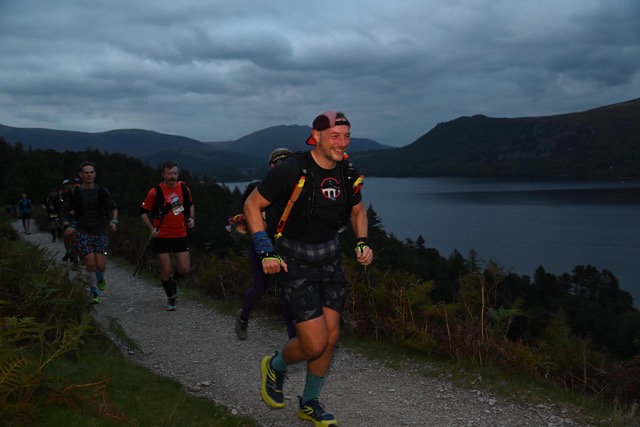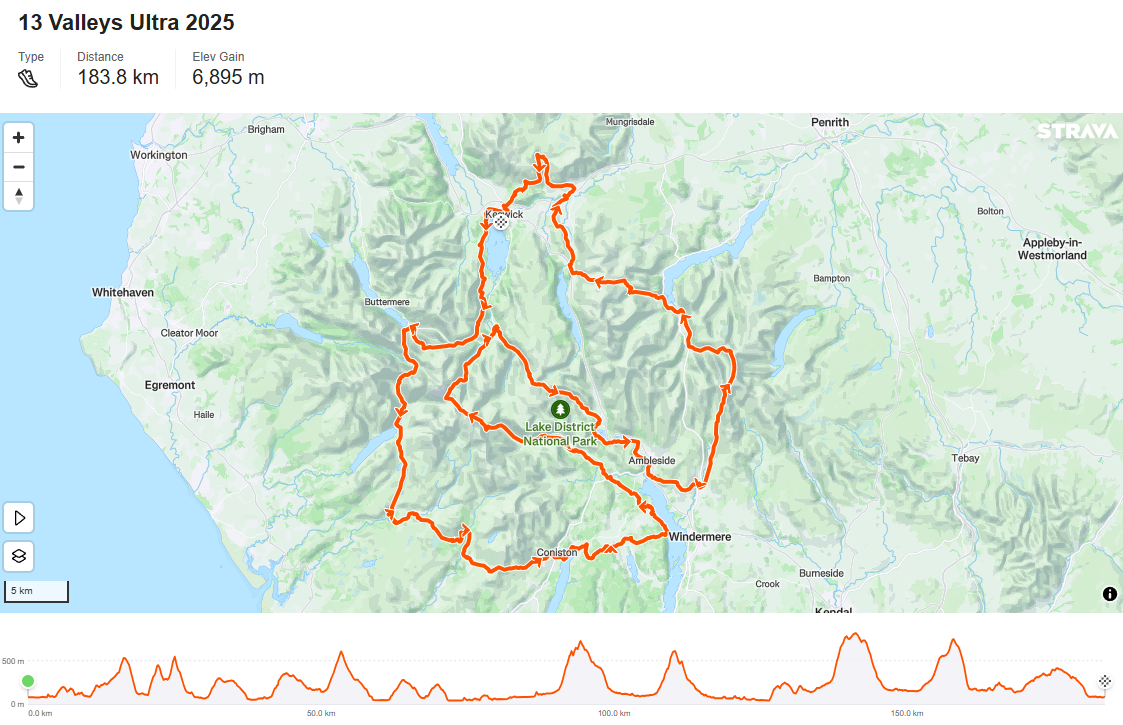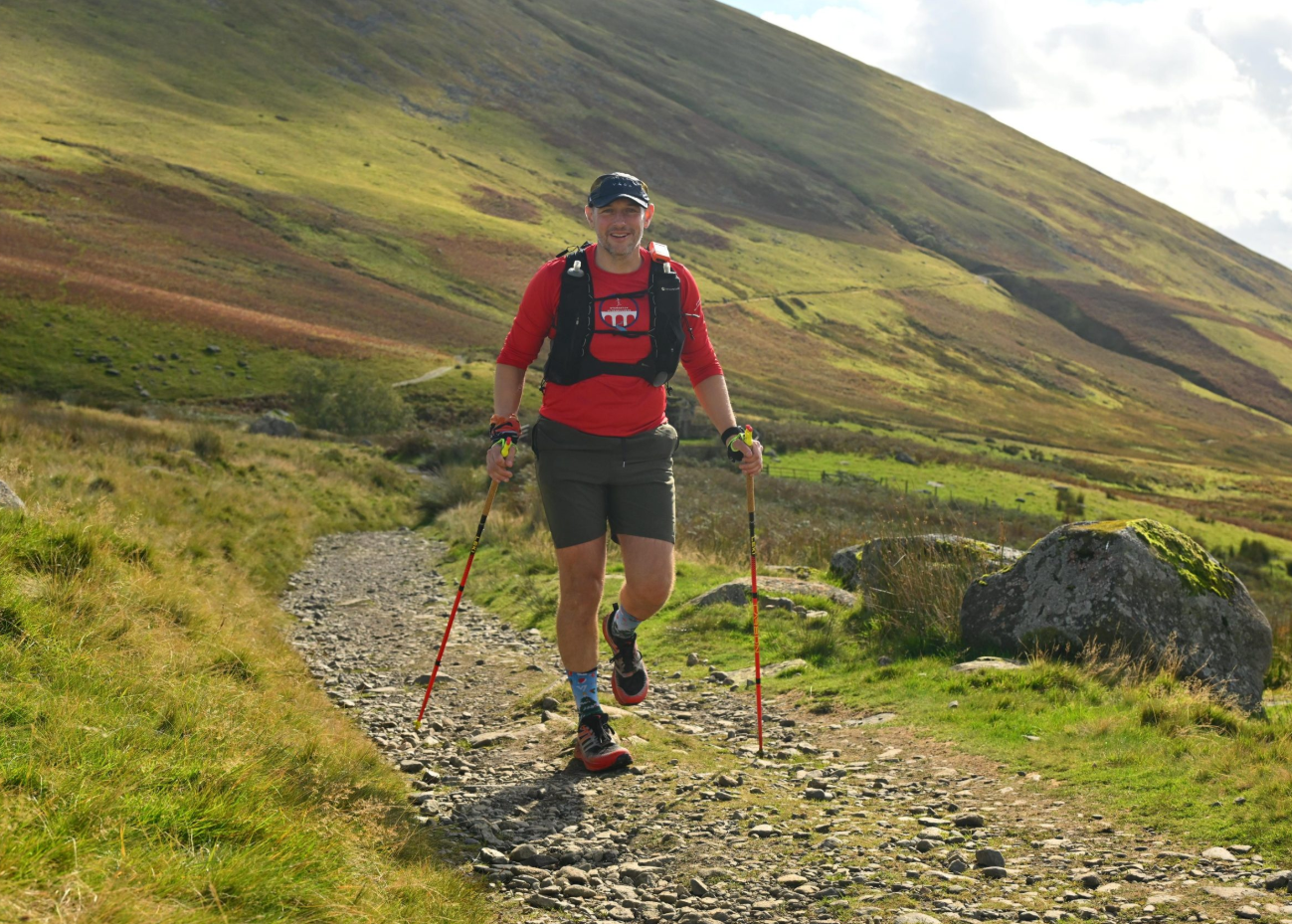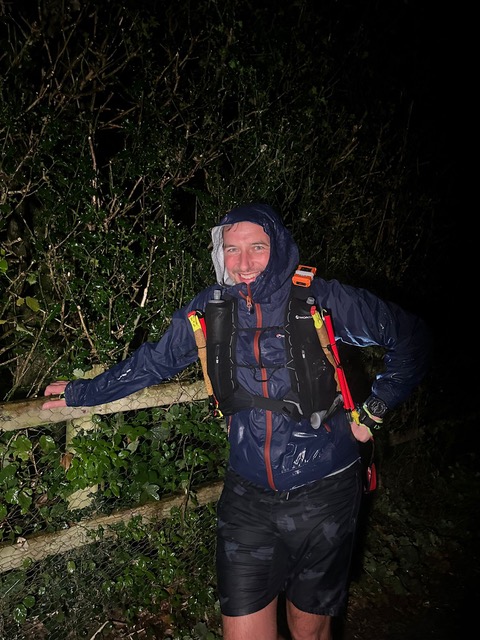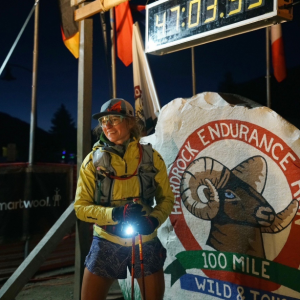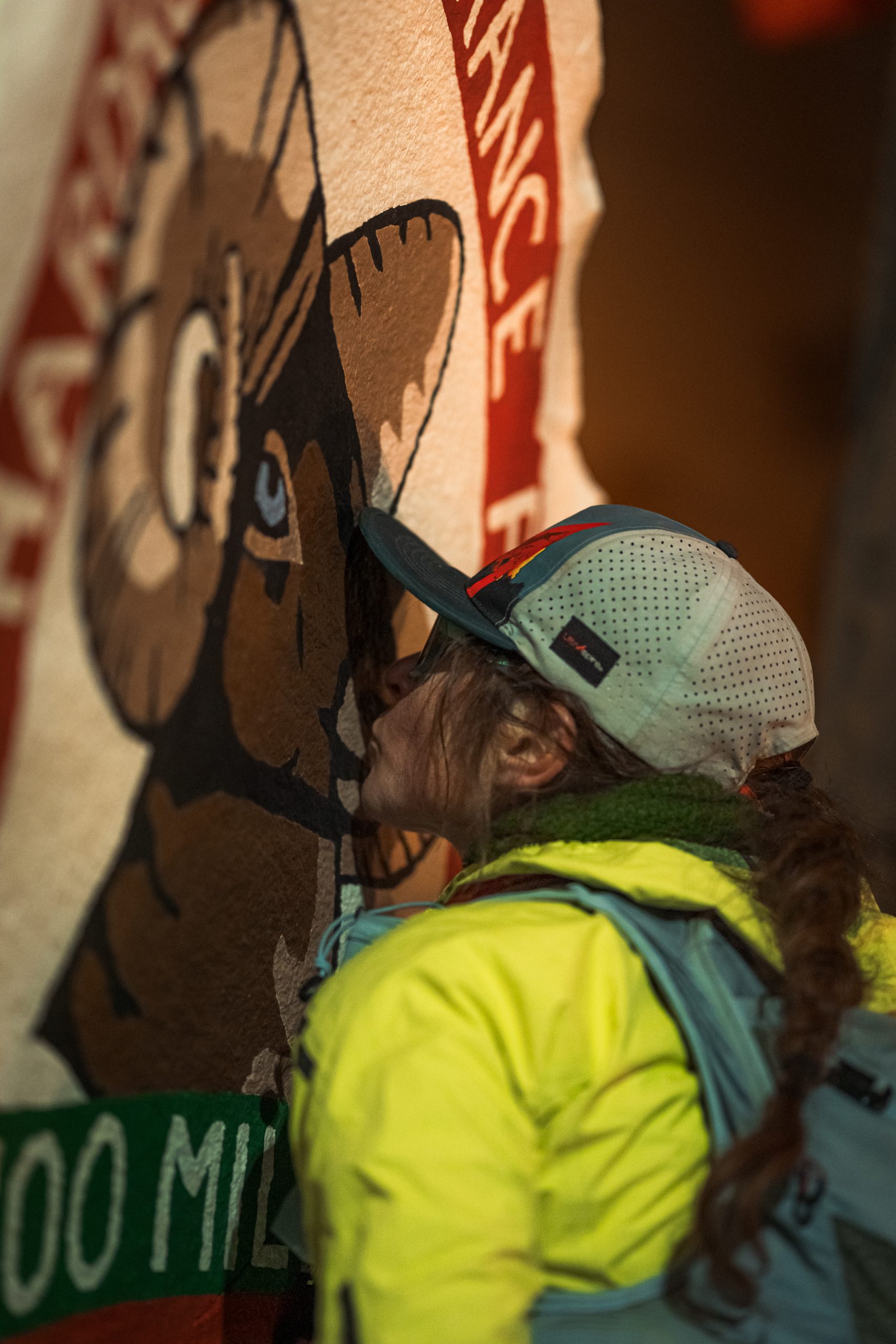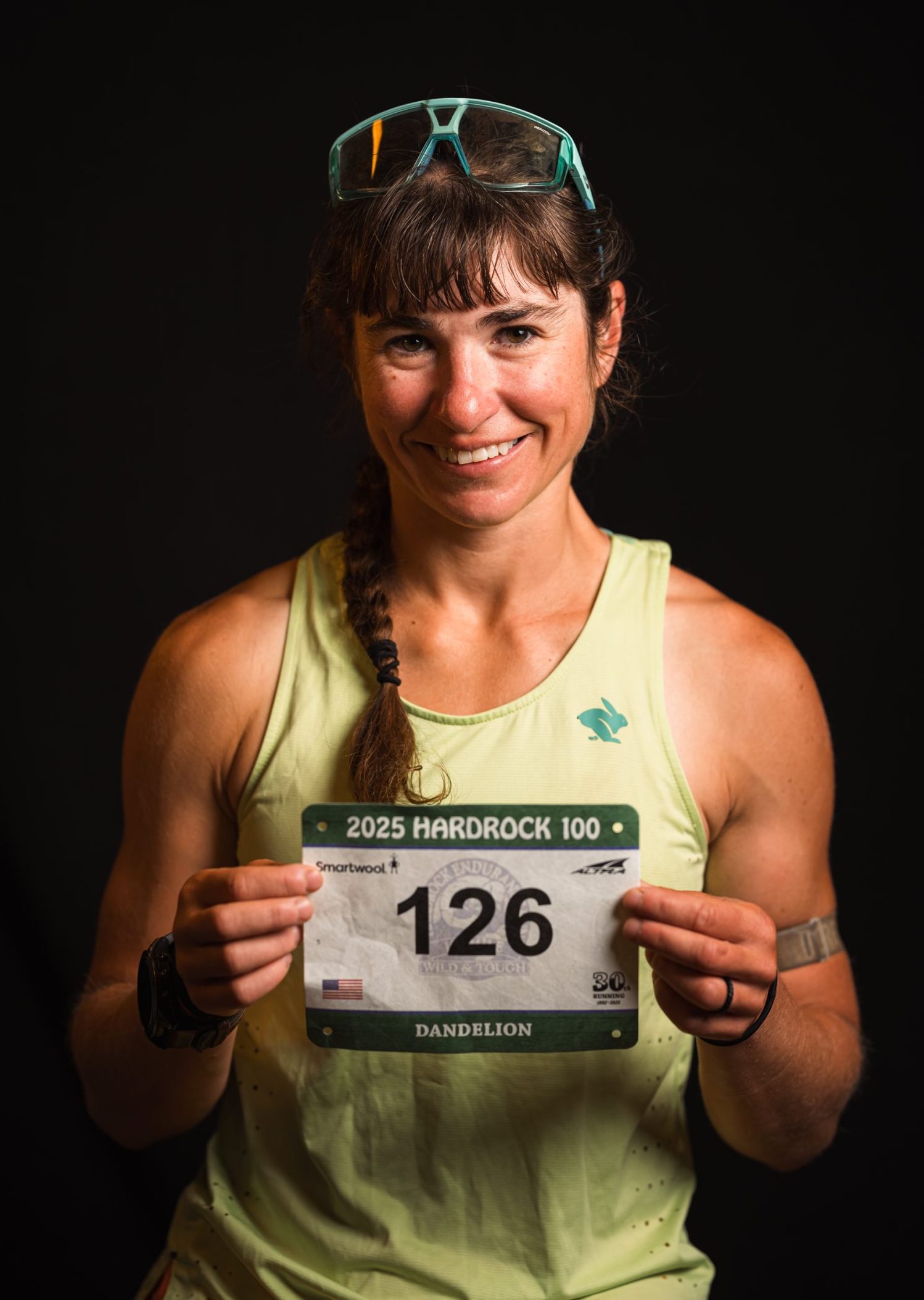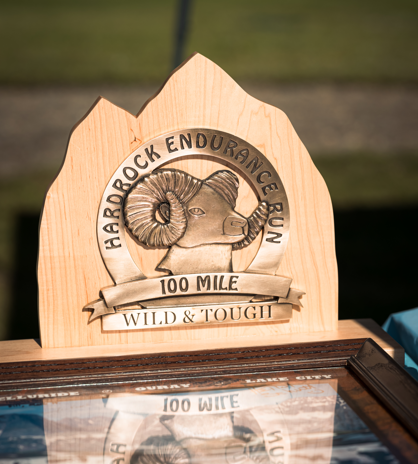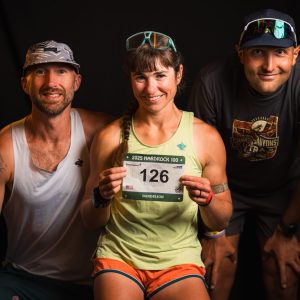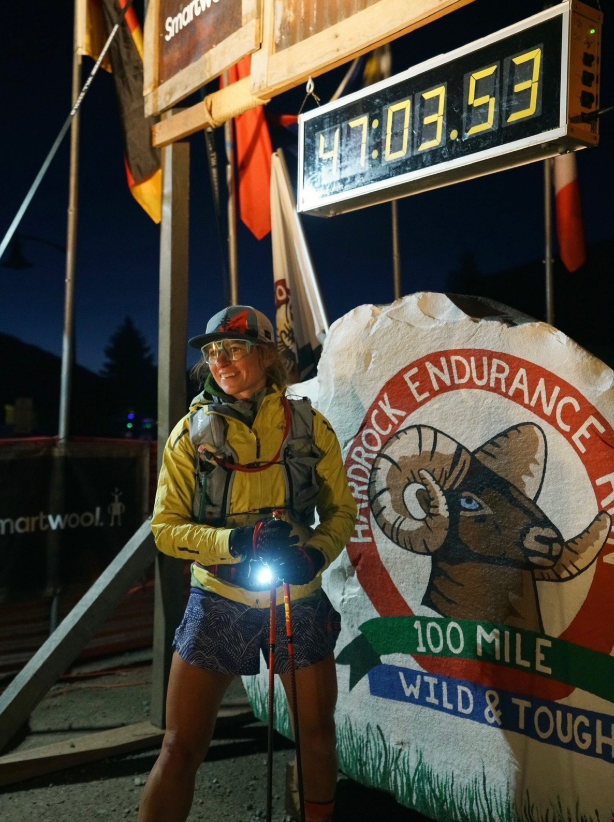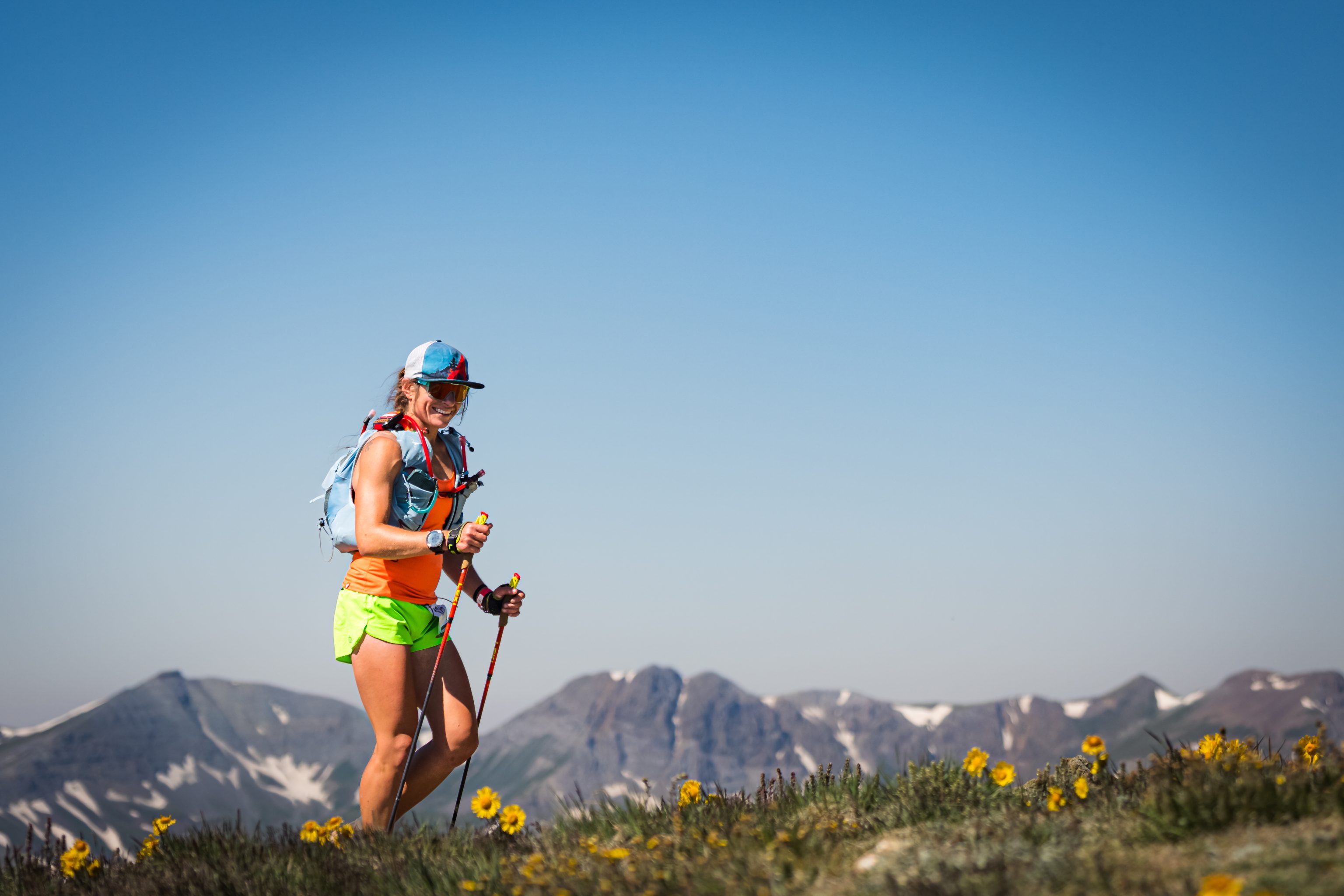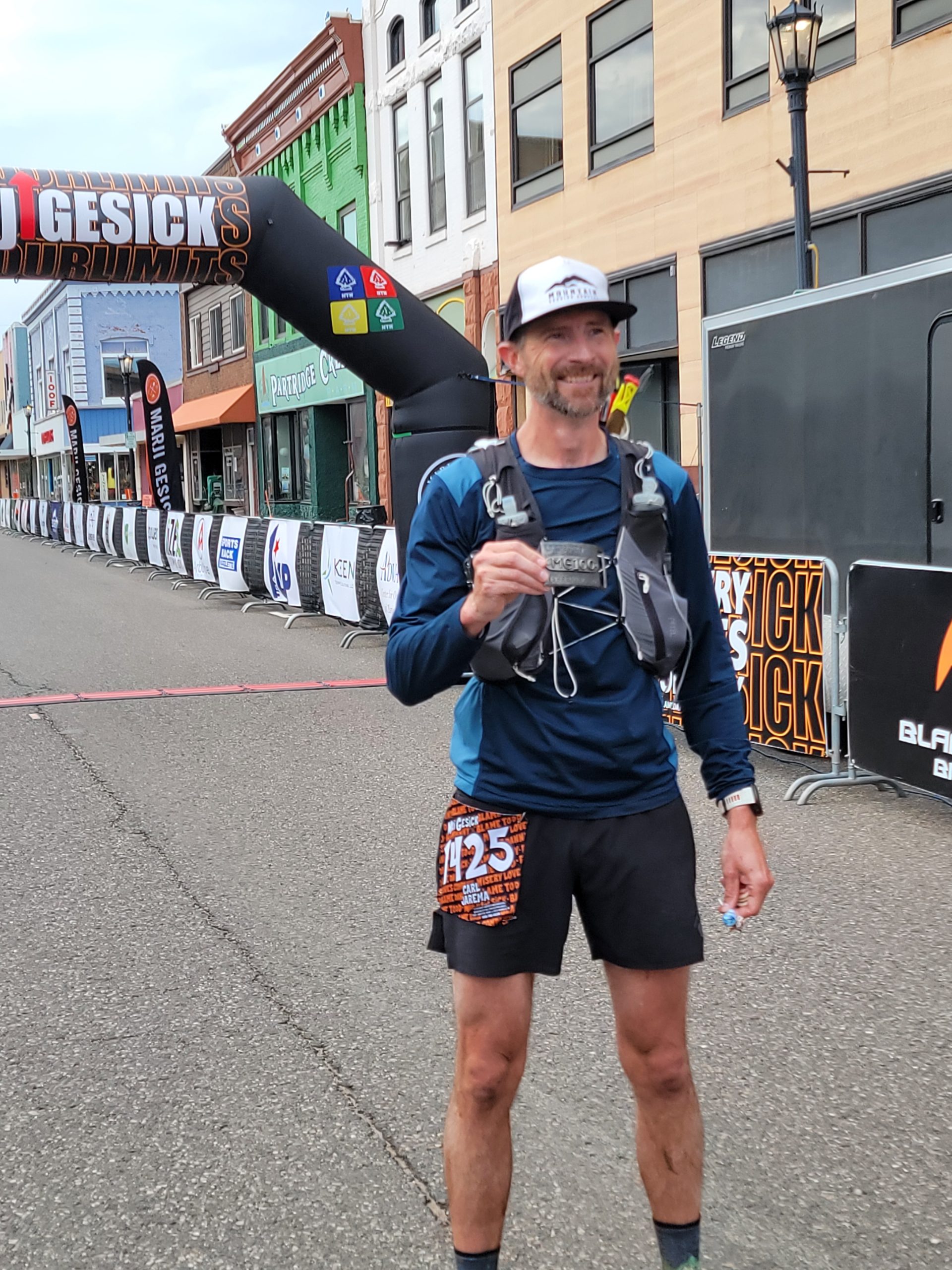
Race: Marji Gesick 100 Mile
Runner: TRR Coach Carl Jarema
Race Date: 09/19/2025
Location: Marquette, MI
Result: 26 hours and 7 seconds; 3rd overall
Strava Link: https://www.strava.com/activities/15876917002
3 Bests – What aspects of the race did you like the most?
- Terrain and scenery: If you have not spent much time in the western part of Michigan’s Upper Peninsula, it should definitely be on the top of your vacation / race list. The colors were about to turn, and mother nature provided great weather. This race is timed to coincide with peak fall colors!
- Crewed by my wife: This was the first race my wife crewed for me. Typically, I run my races with support from drop bags and aid stations, but this time, my wife was there to crew me the entire race. I enjoyed sharing the experience with her.
- Community: The Marji Gesick 100 is self- / community-supported race, and it was fun and exciting to interact with all the other runner crews. They always offered water, food, or any assistance, really highlighting one of the aspects that makes trail and ultra such a special community.
Not so much – Aspects of the race that didn’t do it for you
There really is not too much I don’t like or love about this race. The mountain bike race, which starts 24 hours after the run, is on the same trails, so depending on your pace and time, you may need to step aside or navigate the bikers as they pass. It is not all bad though. Based on my 2023 experience, every bike rider cheered and encouraged me along the route. The inconvenience of stepping off the trail was balanced out by the support from the bikes.
Weird factor – What’s the weirdest thing about this race?
Everything about this race is weird and unconventional! Marji Gesick really is a 365 day event. Registration sells out in minutes, there is not waitlist, and the intentional misinformation, confusion, and tom foolery from the race organizers and fellow participants is nonstop to race day. Check out “Marji Geski Talks” on Facebook, and you will understand. The 100 mile run starts with a 0.5 to 0.75 mile bike ride. Yes, you need to bring a bike to a running race! There are no aid stations. You bring your own crew, or you rely on the community. Full stop. It is up to you to prepare. The course map is available only a couple days before the race, and to prove you ran all 100 miles, you need to collect “tokens” from plastic pumpkin buckets along the course. The tokens could be “Dum Dum” suckers, random objects, or wooden tokens. Trust me, if something is in a bucket, you need to bring it to the finish line. This year, I collected 2 suckers and 3 wooden tokens. Oh, and just for fun, there are even more “fake” buckets that are completely empty!
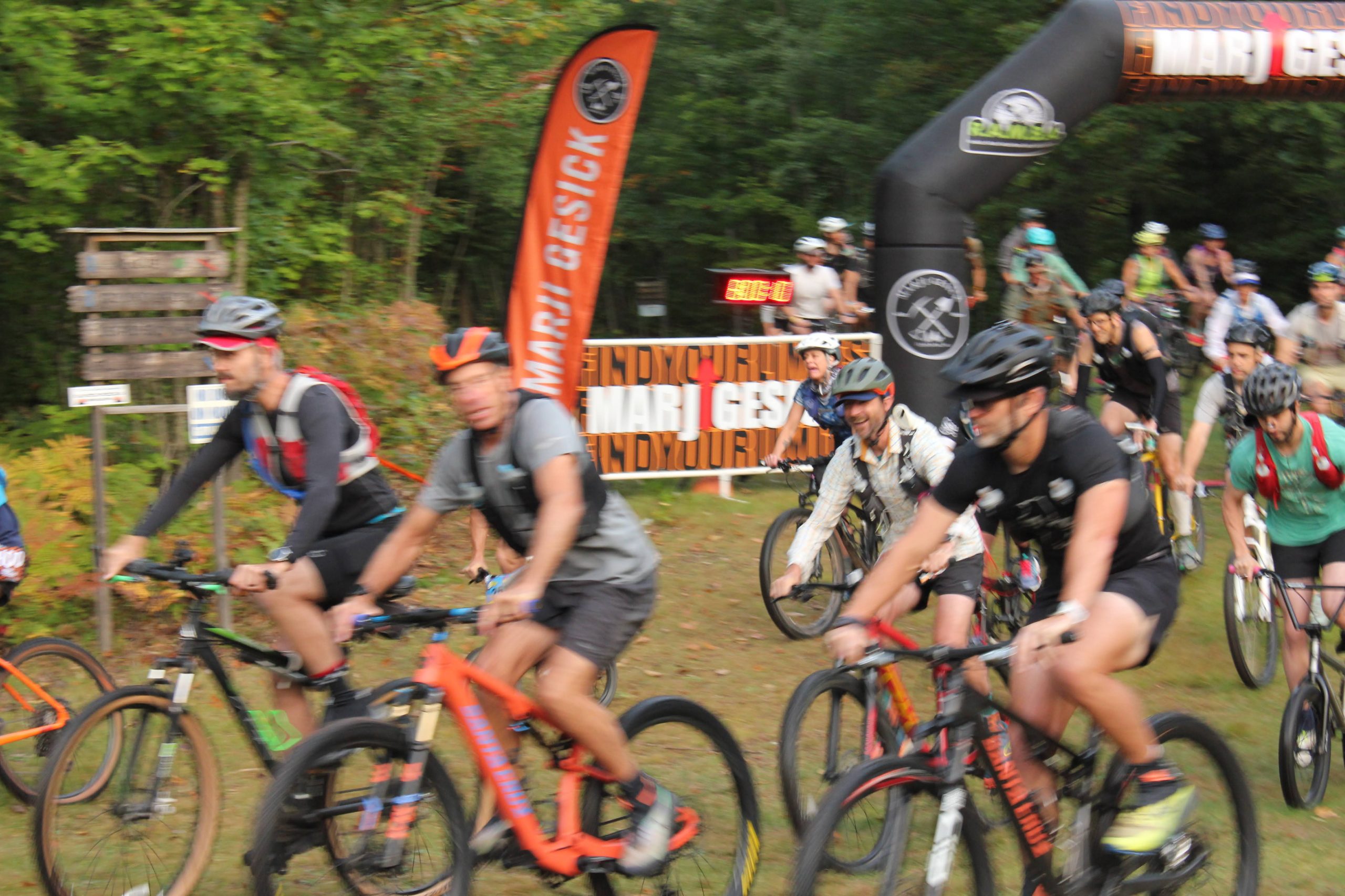
Highlights of your race – What did you do well and enjoy about your race in particular?
This race for me was what the Marji community calls #unfinishedbusiness. I completed the Marji Gesick 100 in 2023 in a little over 39 hours. Yes, it was my first 100 mile race, but I knew I had much more potential. My training was less than I wanted, I didn’t know how to fuel, and I was only a couple years into my running rebirth. Add to that, I slept terribly the week and days before (my dad was suffering from cancer at the time, and I got a call around mile 40 that he fell unconscious and wouldn’t wake up. He passed away less that 2 days after I finished).
OK, sorry for the bummer start. But, this time, I was able to train very well heading into the race, and my nutrition and hydration were dialed. I ran way more of this race than I have in other 100 milers, and I finished in time to earn my belt buckle, awarded to runners under 28 hours.
Lessons for others – Share your pro-tips on the race to help the next runner
A few tips for runners considering this race:
- Do your homework. There is no race packet or step by step instructions for the race. You need to go out and dig up the information. It is worth getting onto the Marji Gesick Facebook pages, and yes, if you do not have a Facebook account, it might be worth creating one.
- Plan your crew. This is pretty much the same for every race that allows crew, but remember, there are no aid stations to fall back on. Coming up with a detailed crew plan is a must.
- Be ready for sudden changes in weather. The race happens on the shore of Lake Superior, it can go from 70 and sunny to 40 and rain in minutes.
- Positive split pacing. Last, the back half of the race is more technical and harder to run. I recommend banking some time in the first 60 miles, if possible, but don’t over do it.
Lessons you learned that will help you next time around
I think I would add more crew stops. We planned on about every 10 miles, and during the afternoon, I was running out of water between stops and had to slow down a bit. I noticed runners with more stops were moving a bit better and faster during the warmer part of the day. I also would try to limit my stop time a little more. We had a hard cap of 10 minutes max at any stop. I think in the future I would try to limit that to 5 minutes. Also, a waist light is a must. I did have a waist light, but I didn’t plan a better way to attach it to my belt. I could have moved better at night if I had better lighting.
Most important course specific knowledge to know about the race
Make sure you are keeping your head up and don’t miss the pumpkins! Don’t worry, they are not hidden like the books in the Barkley Marathons, but as the race goes on, you could miss one in a sleep deprived state. Also, be ready for the punchy and rocky climbs that come after mile 60. The first half of the race has pretty good flow to it, however, after mile 60, there are a lot of technical trails with short, but very punchy climbs. Don’t forget, the race will probably be somewhere between 100 and 110 miles, so don’t get discouraged when you cross 100 miles on your watch and there is still and hour or two left to go in the race.
Aesthetics – Is it a pretty course?
The race is beautiful. You spend most of the time running through the forest just as the leaves start to change. You are treated to views of lakes, and you run along rivers: there are few better places to suffer.
Difficulty – Is it a tough course?
The course is harder than the elevation profile will show. The course is much more like an east coast trail: rocks, roots, and punchy climbs. No climb is terribly long, but they just keep coming. Be ready for a tough go at the end of race. This years Marji Gesick 100 race was closer to 110 miles with over 13,000 feet of elevation!

Organized and well run – Did it feel like a well-oiled machine or were they flying by the seat of their pants?
Despite it’s unconventional nature, the Marji Gesick 100 is very well run. Remember, this is intentionally difficult to get information, but the race itself is run very well and smoothly. The after party is work sticking around for, cheering on the other race distances between the runners and bikers.
Competition – Is there a strong field?
This year had one of the stronger fields. There were a record number of runners and bikers earning buckles, finishing under 28 and 12 hours respectively. 2025 also saw the first 3 women earn buckles for mountain biking! The biking field is very strong, with a number of sponsored riders, but the run is more regionally competitive.
Logistics – Does it require a special handshake, registration a year in advance, hotels all booked? Give us the low down on the nuts and bolts of making the race happen.
The registration for the run is on BikeReg, which might seem odd. Also, there is no waitlist, and the race sells out in less than a minute for the bike races and within five minutes for the runs. Even though there is no waitlist, if you stay connected to the Facebook pages you likely will be able to find a bib transfer or win a random race entry for playing along with the random games.
Aid Stations – Standard fare or anything special to know about the aid stations in terms of what’s available or when?
There are NO AID STATIONS! On Saturday afternoon, the community does come out and create some aid stations, but those are often not there during the run. However, as the run has gained popularity, each year sees more community members coming out to set up aid for the runners. Make sure you come with a well planned out crew support plan.
Weather and typical race conditions
This is early fall in Michigan’s UP. Every year the weather has been different, from 80 degrees and sun, to 40 degrees and rain. This year, the temperature was in mid 60s to low 70s, with sun during the day for the run. Saturday afternoon and evening, rainstorms came in and soaked many runners and bikers still on course. Make sure you crew has clothes for you for all weather.

Gear – Did you need anything special or is there anything you’d recommend for the next runner?
I did not bring anything special. The Marji Gesick 100 is not a mountain race, but I did find my poles to be helpful. Also, a secure waist light is a game changer on the technical trails.
Spectators – Is this a friendly course for your friends?
Because it is crew supported, friends and family can see their runner very often during the race. There are very few limitations to where crew and spectators can access. Only rule – no pacers!
How’s the Swag?
This is a non profit organization, so all race swag is for purchase only. Personally, I like this idea. I have too many shirts, medals, and other race swag just collecting dust and it feels wasteful. I do not mind deferring any additional cost from registration to “free” swag vs purchasing on my own. Also, you do get to keep your tokens as an award. Note that this is also a buckle or bust race: if you don’t buckle (finish under 28 hours), there is no finisher medal.
The Overall Score – How many stars do you give this race and do you recommend that others run it?
9 out of 10 starts. This is a 365 day event, and the community is awesome. Once the community comes out to the run like they do for the bike, I will rate the Marji Gesick 100 10 out of 10 stars!

